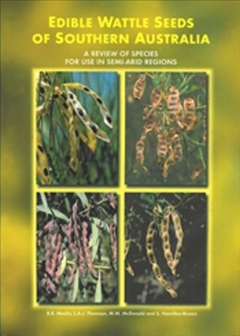 Edible Wattle Seeds of Southern Australia
Edible Wattle Seeds of Southern Australia
Science
CSIRO Publishing
1998
108
9780643102538

Edible Wattle Seeds of Southern Australia identifies 47 Acacia species that have potential for cultivation in the southern semi-arid region of Australia as a source of seed for human consumption. Eighteen of these are regarded as having the greatest potential.
This book provides botanical profiles for these species, together with information on their natural distribution, ecology, phenology, growth characteristics and seed attributes. Two of the species, Acacia victoriae and Acacia murrayana, appear particularly promising, as their seeds have good nutritional characteristics and were commonly used as food by Aborigines.
Acacia victoriae is currently the most important wattle used in the Australian bushfood industry.
Edible Wattle Seeds of Southern Australia is a useful reference book for the bush food industry.

